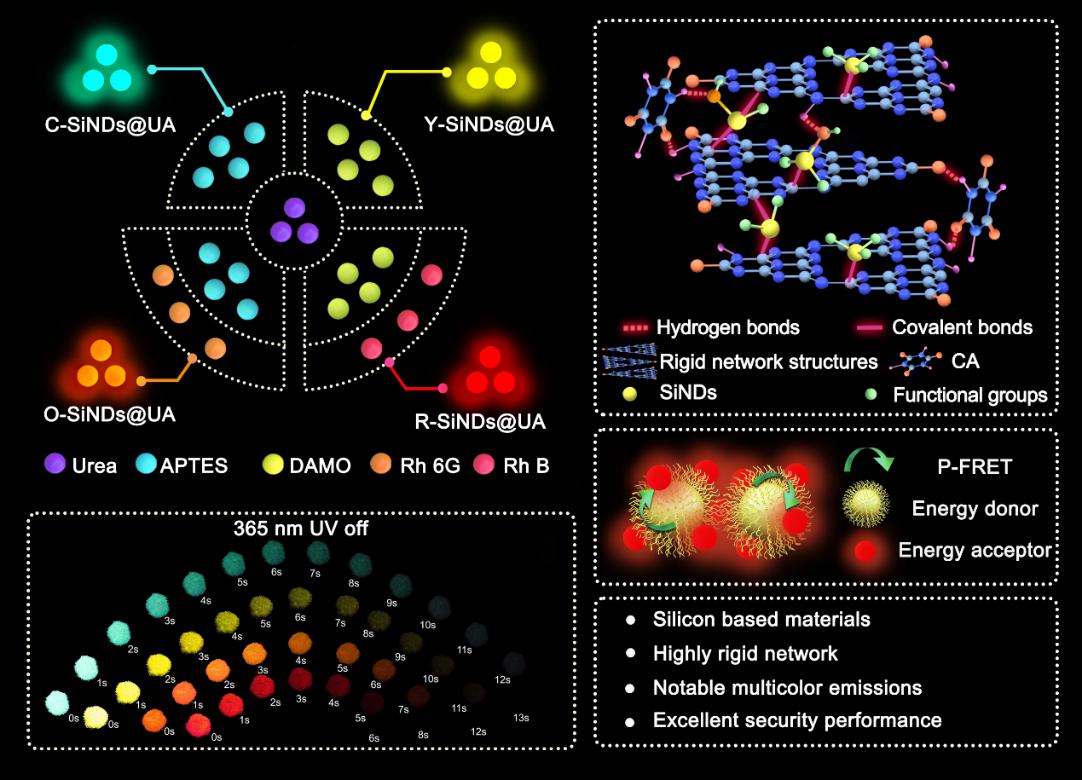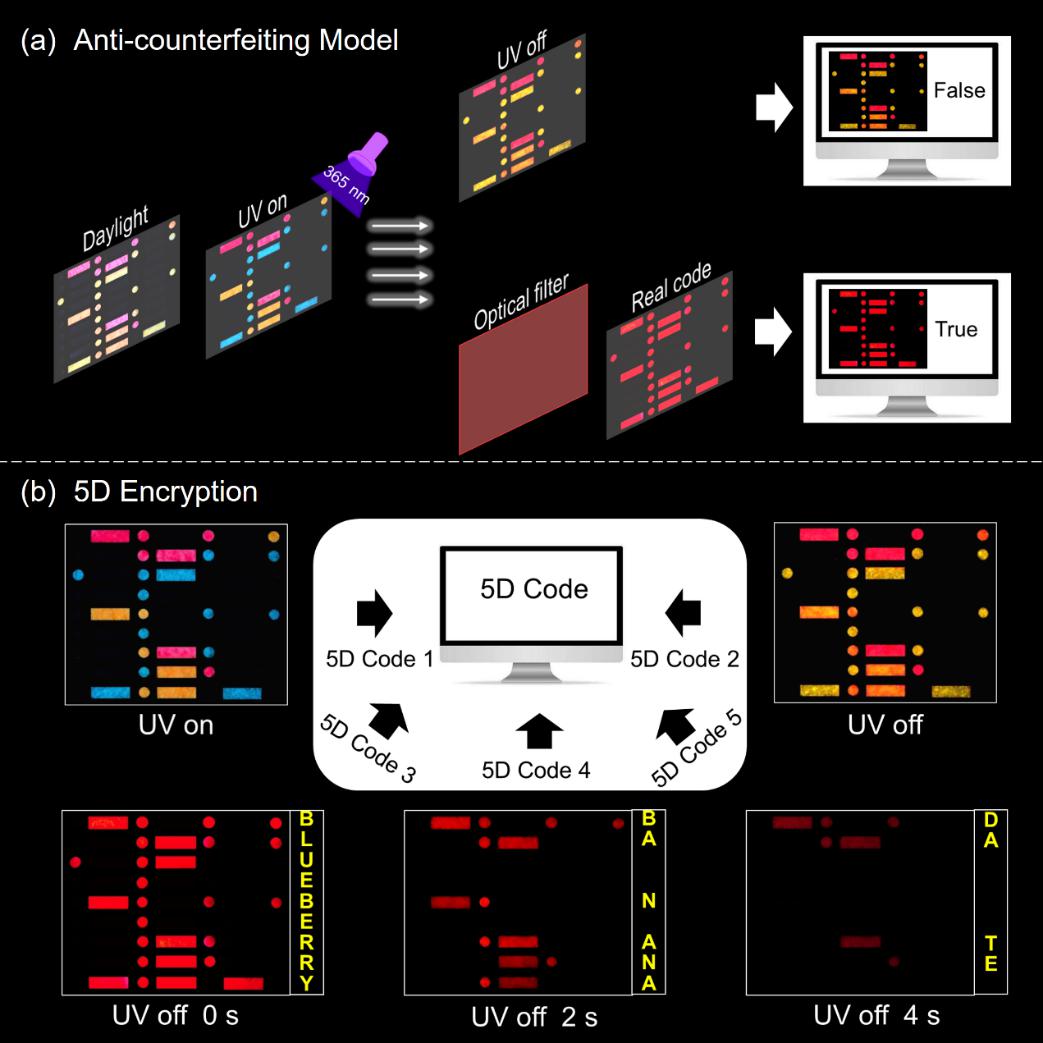The application of photoluminescent materials in the field of information security has been attracting much attention. A number of anti-counterfeiting technologies have been developed, including watermarks, 2D codes and luminescent printing. However, common fluorescent materials are single-colored and easily imitated.
Recently, a team of researchers from Suzhou Institute of Biomedical Engineering and Technology (SIBET) of the Chinese Academy of Sciences developed a nanocomposite material with multi-color afterglows using a simple hydrothermal method.
The team used silane as a precursor for the synthesis of Si-based phosphorescent materials and applied it in the field of information security.
Room-temperature phosphorescence (RTP) materials were widely used in bioimaging, information security and lighting because of their distinctive afterglow characteristics.
"Conventional synthesis methods primarily involve inorganic compounds that contain rare-earth ions or complexes containing precious metals to deliver afterglow, which inevitably leads to high biological toxicity and expensive syntheses,” said DONG Wenfei, leading researcher of the study.
Two preconditions must be satisfied namely efficient exciplex intersystem crossing (ISC), and a stable rigid structure that stabilizes the excited triplet states of the exciplexes, according to DONG.
The team selected 3-Aminopropyl triethoxysilane (APTES) and N-[3-(Trimethoxysilyl) propyl] ethylenediamine (DAMO) as Si sources, with urea added as another precursor, to produce optically stable cyan and yellow RTP materials, respectively.
The preparation process is a one-step hydrothermal method, which not only effectively avoids the disadvantages of the two-step method but also more conveniently forms nanodots in situ and immobilizes them in the matrix.

Fig. 1 Schematic illustration for the preparations of C-SiNDs@UA, Y-SiNDs@UA, O-SiNDs@UA, and R-SiNDs@UA. (Image by SIBET)
This newly-developed anti-counterfeiting strategy can be applied to higher-level encryption scenarios, in which only interference information is obtained in UV-irradiation and afterglow modes, and the assistance of a filter is required to accurately read the encrypted content, thereby enabling better concealment of the correct information, said researchers.

Fig. 2. (a) Schematic diagram of the structure of the anti-counterfeiting model. (b) Initial code information composed of three materials under 365 nm UV light (5D Code 1) and after removal of the UV light (5D Code 2), and the 5D Code 3, 4, 5 information that changed with time was observed after using with the optical filter (λcut-off = 600 nm). (Image by SIBET)
Given the universality of this method, this standardized strategy not only highlights the potential of constructing multifunctional phosphorescent materials from silane, but also provides a novel design principle for the synthesis of full-color afterglow materials, said Dr. ZAN Minghui, one of the corresponding authors of the study.
"This work demonstrated the feasibility of using silane to synthesize multi-color phosphorescent materials and provides novel design principles and insights for the construction of silicon-based afterglow materials for innovative applications,” said DONG.
The research results entitled “Multi-Color Room Temperature Phosphorescent Silicon-Nanodot-Based Nanocomposites with Silane Tuning and Applications to 5D Information Encryption” were published in Chemical Engineering Journal (IF=15.1).
LIU Yulu is the first author of the paper, and Prof. DONG Wenfei and Dr. ZAN Minghui are the co-corresponding authors.
The research was supported by the National Key R&D Program of China, National Natural Science Foundation of China, High-level Innovation and Entrepreneurship Talent Introduction Plan of Jiangsu Province, etc.
Contact
XIAO Xintong
Suzhou Institute of Biomedical Engineering and Technology, Chinese Academy of Sciences (http://www.sibet.cas.cn/)
Phone: 86-512-69588013
E-mail: xiaoxt@sibet.ac.cn